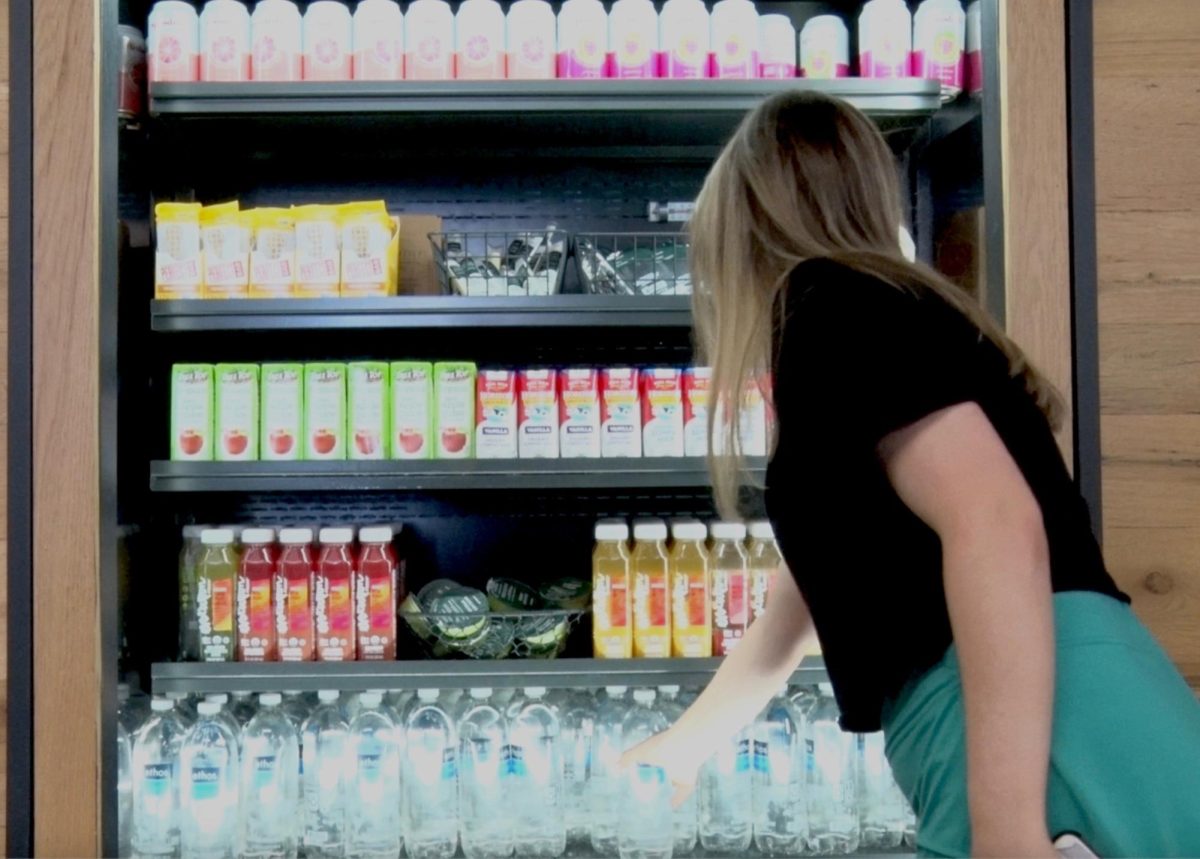Genetically modified organisms are starting to cramp organic farmers’ style due to unintended contamination. Growing crops free from GMOs and pesticides pollution are becoming increasingly difficult and costly GMO and non-GMO farmers alike.
American chemical and agricultural biotechnology corporation, Monsanto Company, introduced genetically-modified crops back in 1996. Since then, many companies have sold a variety of genetically-engineered crops that resist Roundup herbicide and fight off harmful pests.
After more than 15 years of using GMOs, farmers continue to see an array of benefits. But resisting herbicide and deterring pests from ruining crops aren’t the results of using GM crops. This technology merges DNA from different species creating unstable combinations of plant, animal, bacterial and viral genes that can’t
occur naturally.
Mixed opinions on the environmental and food production impact of GM crops foreshadows the possibility of unintended and unwanted consequences.
The large number of farmers using herbicide on GM crops has become a topic of concern according to a report issued by the U.S. Department of Agriculture. Overuse of this herbicide leads to GM crops developing immunities to the chemicals being used to combat disease and pests, rendering the once effective herbicide useless.
As plants adapt and become more susceptible to natural selection, harvests are bound to be less fruitful. GMO farmers producing large portions of the overall food supply realize they have a serious problem at hand.
The way in which GMOs are made disrupts the plant’s DNA in potentially harmful ways as well. Numerous organizations believe GMOs are unhealthy and emphasize non-GMO diets.
Animal studies showing organ damage, gastrointestinal and immune system disorders, accelerated aging and infertility. Human studies have displayed how GM food leaves material behind inside the body.
The phrase “you are what you eat” takes on a whole new meaning and has the potential to cause long-term problems. Genes inserted into GM soy can transfer into the DNA of bacteria living inside the human body. Traces of toxic insecticide produced by GM corn was found in the blood of a decreased woman and her unborn child.
An overwhelming consensus among FDA scientists is that GM foods might result in unpredictable and hard-to-detect allergens, toxins, new diseases and nutritional problems.
Countless health problems skyrocketed after the introduction of GMOs to the agriculture industry. In nine years the percentage of Americans with three or more chronic illnesses jumped from 7 percent to 13 percent. Reports of food allergies rapidly increased, and disorders like autism, reproductive disorders and digestive problems have also been on the rise.
Health risks aren’t the only issue surrounding the use of GMOs either. GMOs reproduce just like other plants — GMOs cross pollinate and their seeds can travel. These seeds are crossing over into non-GMO contaminated gene pools.
According to Food & Water Watch and the Organic Farmer’s, Inc. Agency for Relationship Marketing’s report, more than 30 percent of farmers trying to grow organic crops reported finding or suspecting unintended GMO presence on
their farms.
The report based on information given by 268 farmers from 17 U.S. states, was one of the comments taken by the U.S. Department of Agriculture on plans for enhancing coexistence of non-GMO and GM crops during the public comment period.
Farmers growing non-GM crops have to take extensive measures and sometimes spend thousands of dollars in order to protect their crops from contamination of GM crops.
The level of non-GMO contamination by GM crops is a concern for all areas because some foreign buyers of U.S. crops will not accept genetically modified versions of food. Other domestic buyers also want only non-GMO foods.
Widespread of production of GM crops worldwide has given rise to a drastic increase of incidents where low levels of GMOs have been discovered in food and feed trading nations.
Contamination can cause financial loss as well as disrupting trade among nations when buyers reject loads that test positive for GMO presence. This disruption and profit loss is a result of some countries declaring shipments of food and feed as unacceptable if GMO levels are detected while other countries make decisions based on acceptable levels of GMOs for particular commodities.
GMO-contaminated food poses a threat to global trade according to a new study by the Food and Agriculture Organization of the United Nations.
Taking soundings from 75 countries, the study found 198 incidents of GMO contamination in global trade between 2002 and 2012. The FAO’s findings determined a “steep acceleration” after 2009, reporting 138 of the 198 total incidents occurred between 2009 and 2012.
Without any international agreement defining universal, acceptable levels of GMOs, the global trading situation has become over complicated due to varying acceptable GMO levels among countries. Acceptable GMO levels in exporting countries may differ from permitted levels in importing countries.
The study found that the most incidents were involved with the trade of linseed, rice, maize and papaya originating mainly from the U.S., Canada and China.
These shipments are commonly destroyed or returned to senders if unacceptable GMO levels are discovered — disrupting trade among nations and creating economic losses for organic and non-GMO farmers attempting to keep crops pure.
“The numbers of incidents are small relative to the millions of tons of food and feed traded every day,” FAO Senior Food Safety Officer and Researcher Renata Clarke said in a news release. “But because of trade disruptions, FAO conducted this survey and is holding a technical consolation to try to start a dialogue between countries on the issue.”
Clarke suggests that the FAO might barely be scratching the surface of what seems to be a growing issue among international trade of food and feed.
“We were surprised to see incidents from every region,” Clarke said. “It seems the more testing and more monitoring they do, the more incidents they find.”
The potential impact of GMO contamination is colossal, threatening the well-being of future generations. Self-propagating and long-lasting, the effects of GMO pollution outlast global warming and nuclear waste according the Institute for Responsible Technology.
Food & Water Watch has called for the USDA to begin tracking and analyzing incidences of contamination and associated economic losses at every level of the supply chain. The group wants the USDA to require GMO crop growers to have buffer zones between GMO and non-GMO crops along with holding biotech seed companies financially accountable for losses associated with contamination.
Other organizations are hard at work ensuring the sustained availability for non-GMO foods and products to consumers. The Non-GMO Project is a nonprofit organization committed to building the supply of non-GMO foods and provides verified non-GMO choices.
The organization’s product verification program is a process and product-based program designed to verify food and products in compliance with the Non-GMO Project’s standards. With core requirements such as traceability, segregation, and testing of high-risk ingredients; this verification process is handled by independent, third-party technical administrators.
This year, more than half of the states are to consider the requirement of special labels on GMO foods. In a country where 80 percent of the food consumed contains GMOs, U.S. legislators question the effectiveness of policies such as GMO labeling.
The majority of farmers growing GM crops want nothing to do with the labels, and the fight has some state attorneys wondering if these laws will survive court challenges made by food producers. Win or lose, it will cost a pretty penny to defend major food producers.
The European Union has required GMO labeling since April 2004. Overall the American public supports labeling GMO foods, according to a 2013 poll by The New York Times, discovering 93 percent of respondents favored labeling.
The cost of GMO labeling would be a small fraction of the costs in compliance with labeling laws. The real costs would come from having to separate GM ingredients from other foods.
These extra expenses would most likely be passed on to the consumer, Washington’s state budget estimated a cost of $3.4 million over six years for the state to enforce label requirements. Voters considered and rejected the proposed labeling law last year.
Sixty-seven labeling bills have been introduced in 25 states and in a dozen states at least one legislative committee has approved a GMO bill. These labeling measures could come at a big price tag for consumers as well as the states defending label laws in court.
The growing support for non-GMO foods and products is a national movement, and critics and proponents of GMOs are calling for public policy to resolve the issues. Avid supporters on both sides of the issue continue to complicate an already complex issue. As the problems around genetic engineering unfold, awareness about the risks and rewards of non-GMOs and GMOs is an essential advancement toward a solution.













